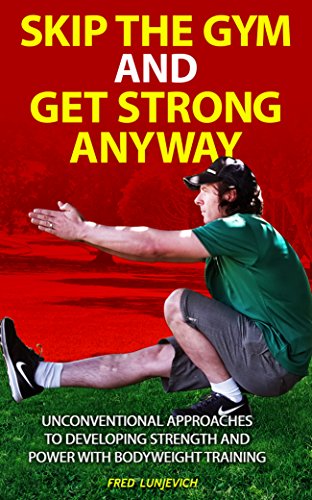To this point i my life, I have successfully avoided doing push up challenges, mainly because I believe training requires occasional rest and recovery days. However, my friends over at The Brojo have set a challenge and invited me to participate, so I thought it would be a good chance to discuss some strategies to achieve 100 reps without destroying oneself.
Thankfully, the standard push up is one that is sufficiently challenging to produce some beneficial gains from daily practice but not so difficult that 100 reps per day isn’t manageable, at least for relatively fit trainers.
One thing worth mentioning up front… Feeling the “burn” and exhausting yourself, contrary to popular belief, is not a great workout strategy. It is in certain contexts, but remember the maxim strength is a skill and this reframes the way we ought approach strength training.
Submaximal sets where burnout is avoided will do far more for your strength gains than constantly pushing yourself into burn territory.
If you can stay within 30-70% of your maximum per set and take adequate rests, you’ll do just fine.
Here are my strategies for thriving with the volume and frequency of the 30 day 100 push ups per day challenge.
“Drop and go” sporadic sets
If you can handle exercising on an unstructured basis, just doing a handful of push ups here and there throughout the day is a great way to go.
For me, though, I like to have some structure to my workouts because then I can manage it and gauge my progress.
However, in the context of 30 day challenge, all that matters is getting your reps in so just dropping and doing 10 here and there is fine.
On the minute (OTM) scheme
This rep scheme couldn’t be simpler — simply do a set number of reps on the minute until you reach the desired total.
10 reps OTM = 100 reps in 9 minutes.
This pace can be tough to maintain so you can drop the reps if need be or divide the reps into two sessions (5 sets of 10). Either way, it’s an efficient way to get your reps in and get on with your life.
On the half-minute
Short sets every 30 seconds can work well also. The difference between this and the OTM method might sound trivial but the “feel” in the muscles is a bit different. The pace of your workout will also feel different and might not be suitable on some days.
My preferred way of doing these:
5 reps on the half-minute = 100 reps in 9 minutes
Reverse ladders
This is my favourite rep scheme, in part because it manages fatigue levels better than most methods.
The protocol is simple:
Start with a high rep count and reduce the reps by one on successive sets.
This method is great for challenging yourself to “cram” reps into short spaces of time while making sets gradually less difficult. Dialling down the reps respects the level of fatigue the muscles are accumulating by adjusting for it.
To get 100 reps with reverse ladders:
Reverse ladder 1: Start with a set of 10 reps. Cumulative reps = 55 (10+9+8+7… +1)
Reverse ladder 2: Start with 9 reps. Cumulative reps = 45
Summary
So there you have it. Four useful ways to tackle high volumes and high frequency that a 30 day challenge demands. Try each method and see what works.
I prefer reverse ladders but there are so many variations to all of these methods so try tweaking them where possible. The beauty of a 30 day challenge is that you have to get creative to make sure the effort and reserves are there tomorrow.

 Do you recall learning your native tongue? Was it hard? Did you struggle with it? Sure you did, but as a child you were just introduced to a complex world without the skills required to even walk or talk.
Do you recall learning your native tongue? Was it hard? Did you struggle with it? Sure you did, but as a child you were just introduced to a complex world without the skills required to even walk or talk. Czech can be a daunting language to learn for some but, like the 1000 mile journey that starts with a single step, it can be learned by making the effort early on to speak it as much as possible.
Czech can be a daunting language to learn for some but, like the 1000 mile journey that starts with a single step, it can be learned by making the effort early on to speak it as much as possible.
